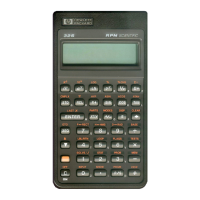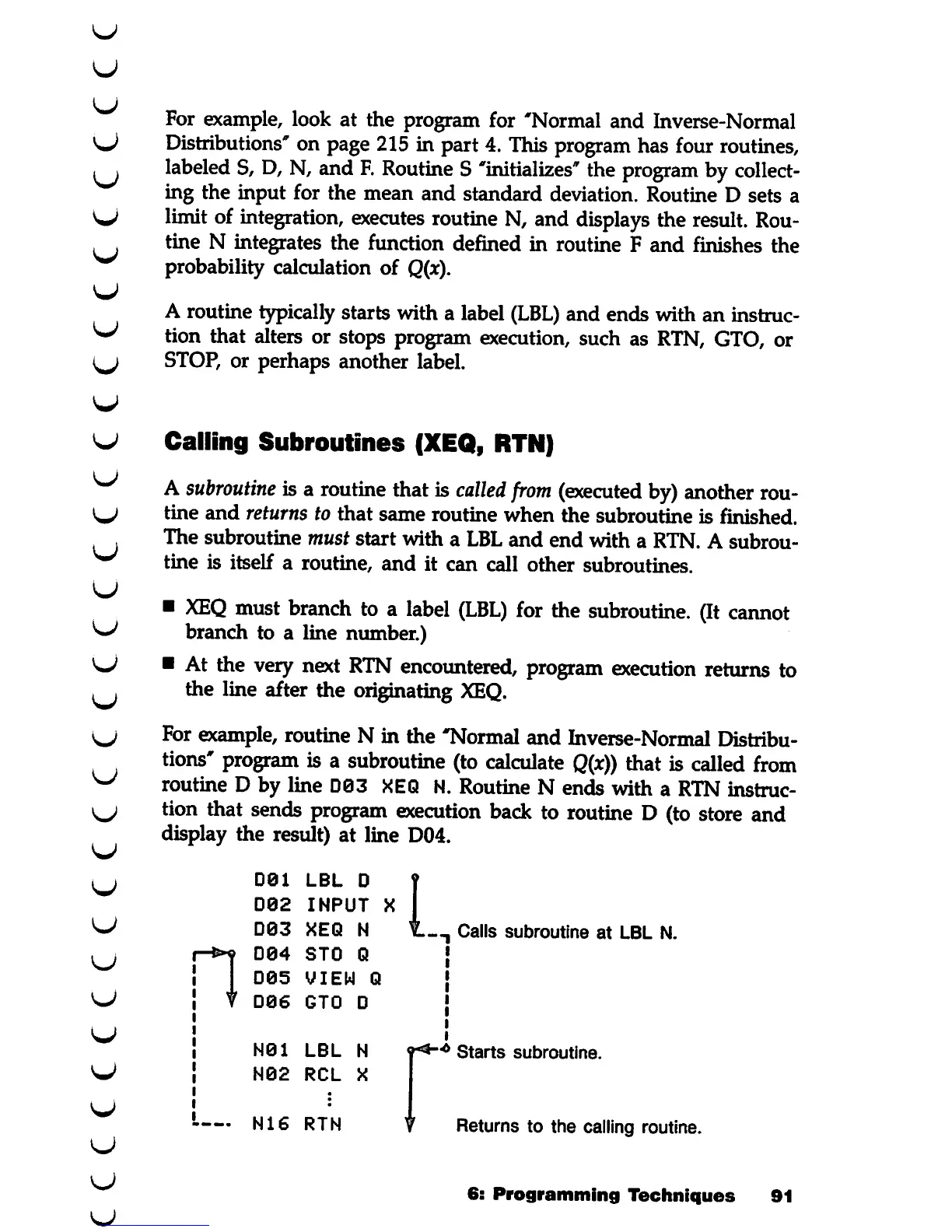For example, look at the program for 'Normal and Inverse-Normal
Distributions" on page 215 in part 4. This program has four routines,
labeled
S, D, N, and R
Routine
S 'initializes" the
program
by
collect
ing the input for the mean
and
standard deviation. Routine D sets a
limit
of
integration,
executes
routine N, and
displays
the
result.
Rou
tine N integrates the function defined in routine F
and
finishes the
probability calculation of
Q(x).
A routine typically starts with a label
(LBL)
and ends with an instruc
tion that alters or stops program execution, such as
RTN,
GTO, or
STOP,
or perhaps another label.
Calling
Subroutines
(XEQ, RTN)
A
subroutine
is a routine that is
called
from
(executed
by)
another rou
tine
and
returns
to
that
same
routine
when
the
subroutine is finished.
The subroutine must
start
with
a LBL
and
end
with
a RTN. A subrou
tine
is itself a
routine,
and
it
can
call
other
subroutines.
•
XEQ
must
branch
to a
label
(LBL)
for the
subroutine.
(It
cannot
branch to a line number.)
• At the very
next
RTN
encountered,
program
execution
returns to
the line after the originating
XEQ.
For example, routine N in the 'Normal and Inverse-Normal Distribu
tions"
program
is a subroutine (to
calculate
Q(x))
that is
called
from
routine D by line D03
XEQ
N.
Routine N ends with a RTN instruc
tion that sends
program
execution
back to routine D (to store and
display the result) at line D04.
001
LBL
0
D02
INPUT
X
D03
XEQ
N
D04
STO
Q
005
VIEW
Q
006
GTO
D
N01
LBL
N
N02
RCL
X
\L
-, Calls subroutine at
LBL
N.
Starts
subroutine.
—•
N16
RTN
V Returns to the
calling
routine.
6:
Programming
Techniques
91

